On August 14, 2025, Bitcoin broke through $123,600 on Binance, with a market capitalization climbing to $2.46 trillion, surpassing Google's parent company Alphabet for the first time, ranking 5th in the global asset market capitalization list. On the same day, Ethereum reached $4,783, just a step away from its historical high of $4,868. The total market capitalization of global cryptocurrencies first crossed $4.26 trillion, setting a new historical high. This wave of increase is the result of stronger expectations for Fed rate cuts, continuous inflow of institutional funds, and the resonance of long and short forces, marking a new phase in the integration of the crypto market with traditional finance.

Key points: BTC and ETH both reach new highs, total crypto market capitalization first breaks $4.26 trillion.
Macroeconomic liquidity shifts: Rate cut expectations ignite risk assets
The U.S. July inflation data became a direct catalyst for market trends. CPI remained flat month-on-month, year-on-year at 2.7% (below the expected 2.8%), and core CPI month-on-month at 0.2% (lower than June's 0.3%), indicating a slowdown in inflation pressure. The market quickly intensified bets on the Federal Reserve's shift to easing, pushing funds from low-yield assets to high-volatility varieties, with the correlation between Bitcoin and U.S. stocks rising to historic highs. Key points: Inflation below expectations strengthens rate cut expectations from the Fed, triggering cross-market fund inflows into risk assets.

Global stock markets rise in unison
Improved liquidity expectations drive global stock markets to strengthen simultaneously. All three major U.S. indexes closed higher, with the Dow Jones up 1.04%, and both the S&P 500 and Nasdaq reaching new closing highs; major European indexes followed suit, with Germany's DAX30 up 0.67%; Asian markets also rose, with the Hang Seng Index above 25,000 points and the Shanghai Composite Index reaching a nearly four-year high. This cross-market resonance highlights the overall reassessment of risk assets during the easing cycle. Key points: Global stock markets reach new highs, with significant liquidity spillover effects.
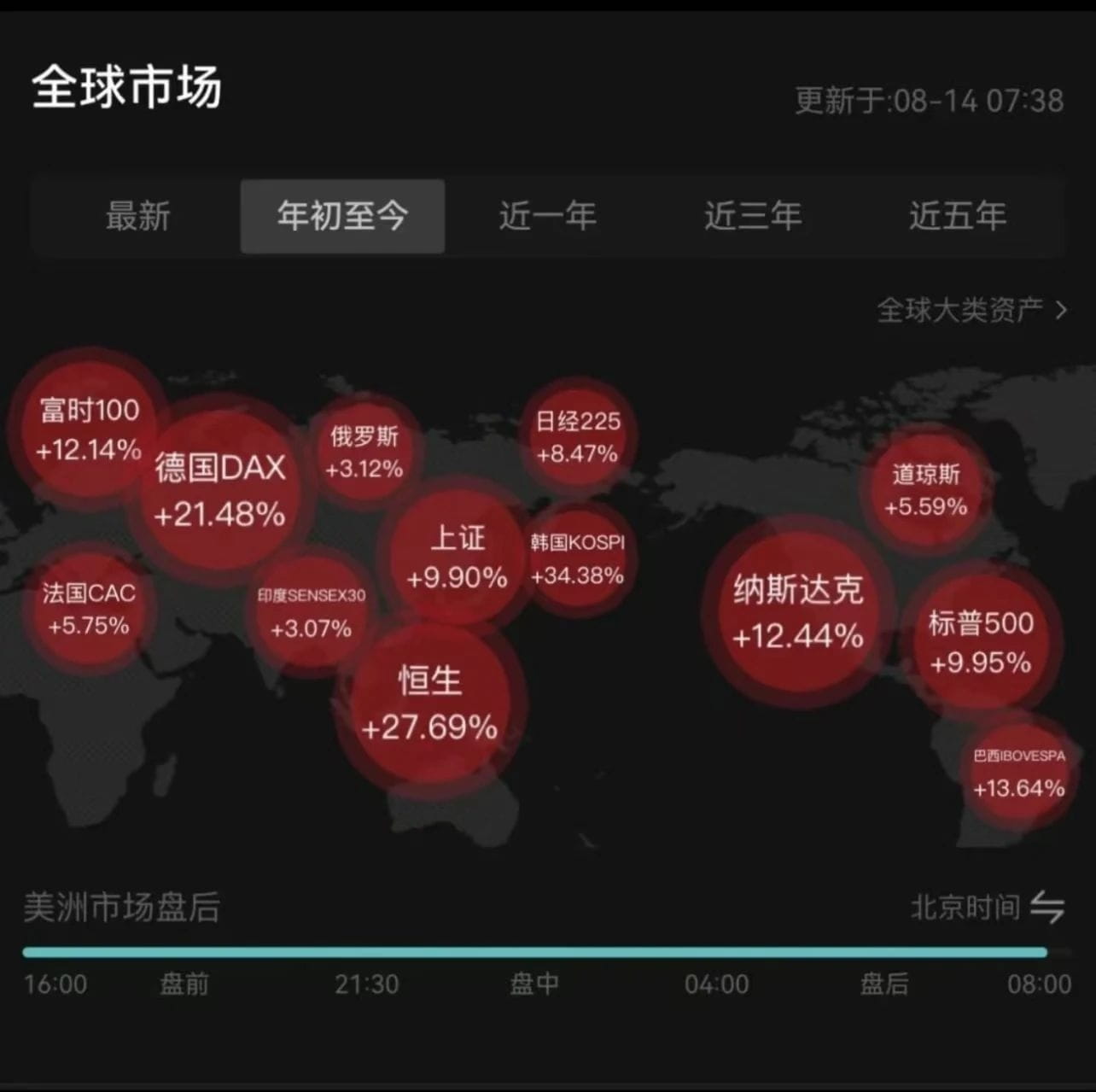
Institutional breakthroughs activate capital
Institutional capital's systematic entry has become the underlying support for the bull market. On August 7, Trump signed an executive order allowing 401(k) pension funds to allocate to crypto assets, unleashing a long-term capital potential of $7.3 trillion. The top 100 global listed companies have collectively held 951,000 BTC (approximately $12.69 billion), with MicroStrategy holding 628,000 BTC, accounting for 3% of the circulation. Harvard University's endowment fund spent $116.7 million in Q2 2025 to buy BlackRock's BTC ETF, reflecting the strategic allocation tendencies of traditional institutions. Key points: Pension policy relaxation + major holdings, institutional long-term capital continues to enter.
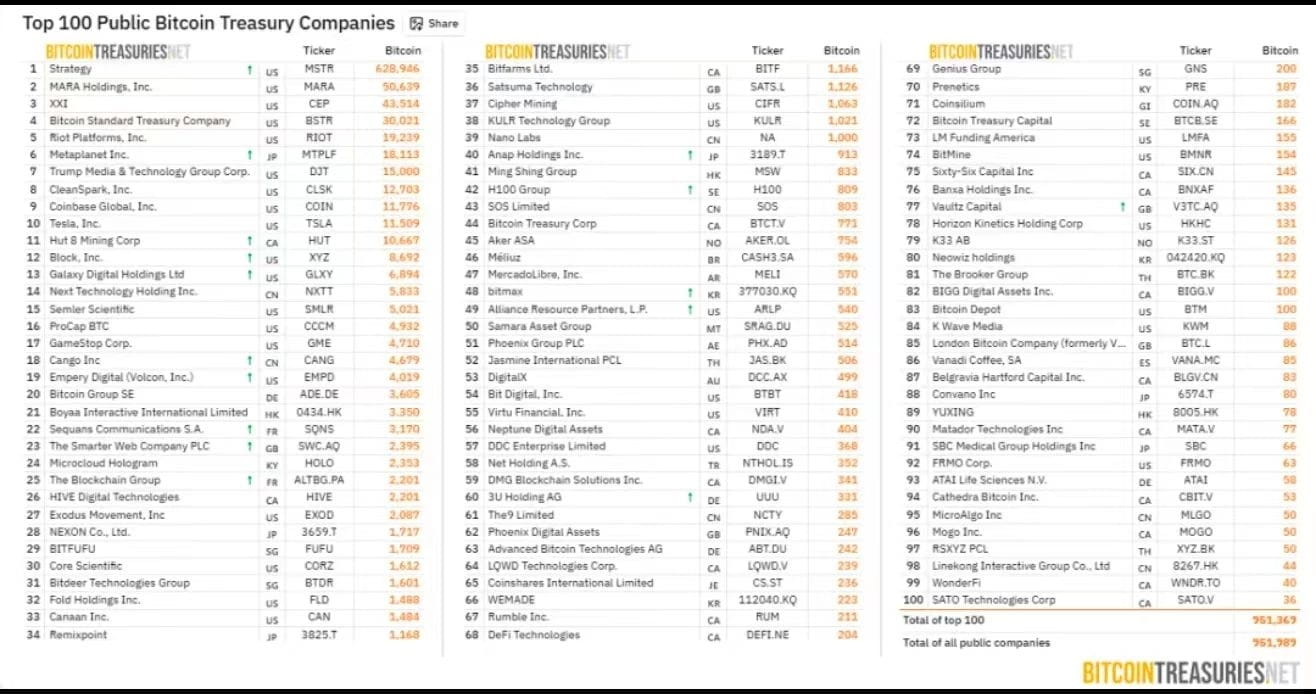
Explosive inflow of ETF funds
Bitcoin spot ETF recorded a net inflow of $65.9 million in a single day, totaling $1.02 billion over the past week.
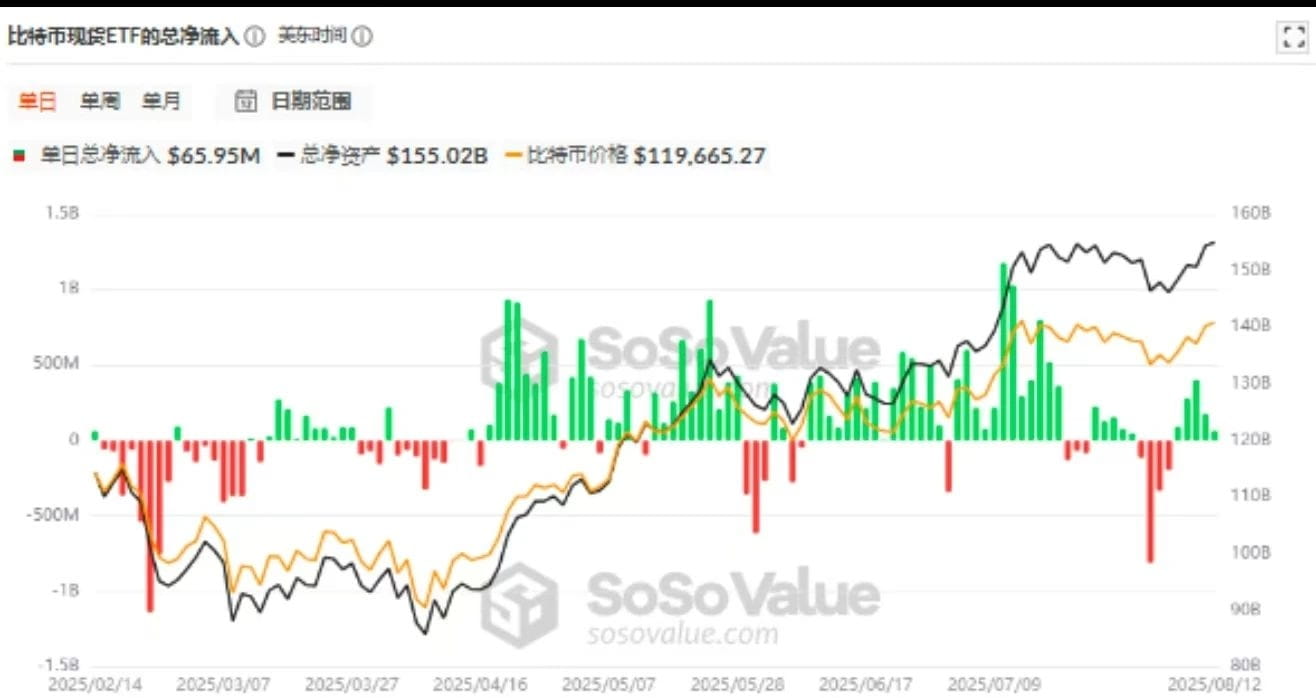
Ethereum ETF recorded a net inflow of $1.02 billion in a single day on Tuesday, totaling $523.9 million for the week.
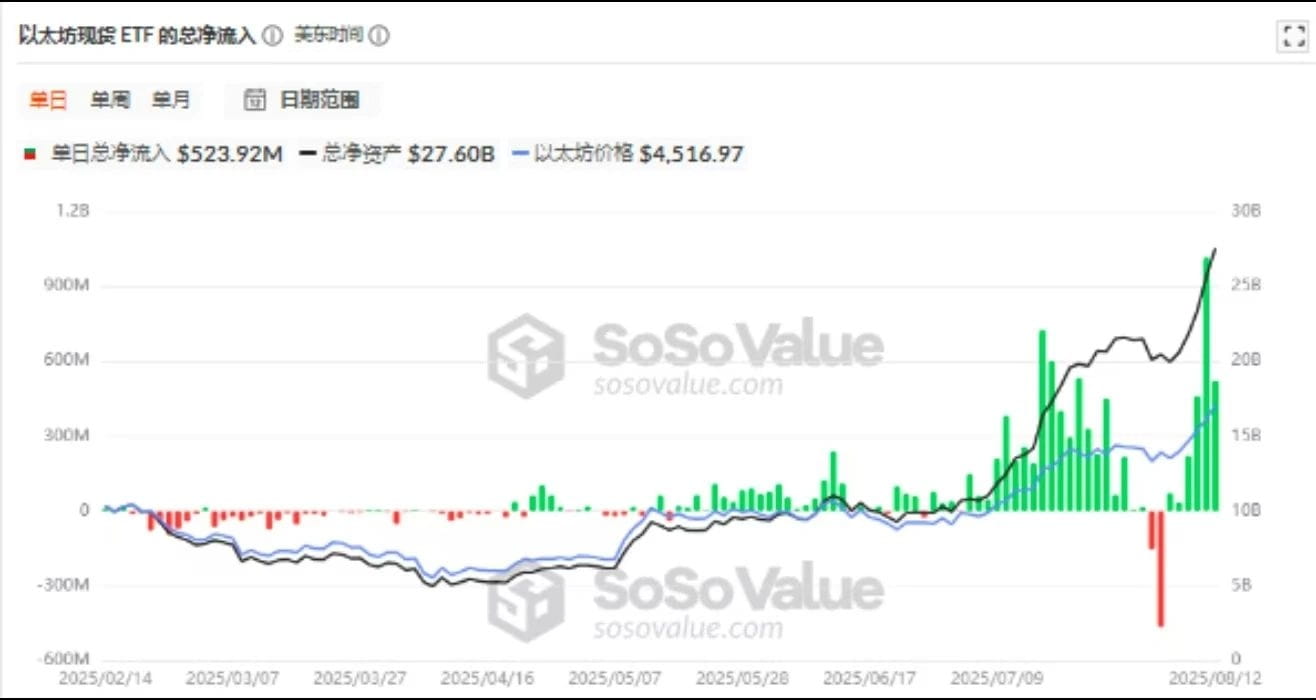
BlackRock, Fidelity, and other giants continue to increase their positions, pushing ETH past key resistance and solidifying its status in institutional asset allocation. Key points: Both BTC and ETH ETFs attract capital, accelerating institutional allocation trends.
Long-short game: Liquidation boosts rise
During Bitcoin's breakthrough to new highs, the derivatives market triggered large-scale short liquidations. In the past 24 hours, 104,244 people globally were liquidated, totaling $403 million, of which short liquidations exceeded $260 million.

In the past week, the amount of short selling liquidations has exceeded $2 billion.
Technical analysis shows that BTC support levels have shifted up to $118,800-$120,500. If it stabilizes above $120,000, it may challenge $140,000-$150,000. Key points: Technical breakthroughs combined with short liquidations create positive price feedback.

ETH continues its strong structure
Ethereum shows a stepped rise, with each pullback attracting new buying. Analysts expect it to challenge $6,000 in the coming months.
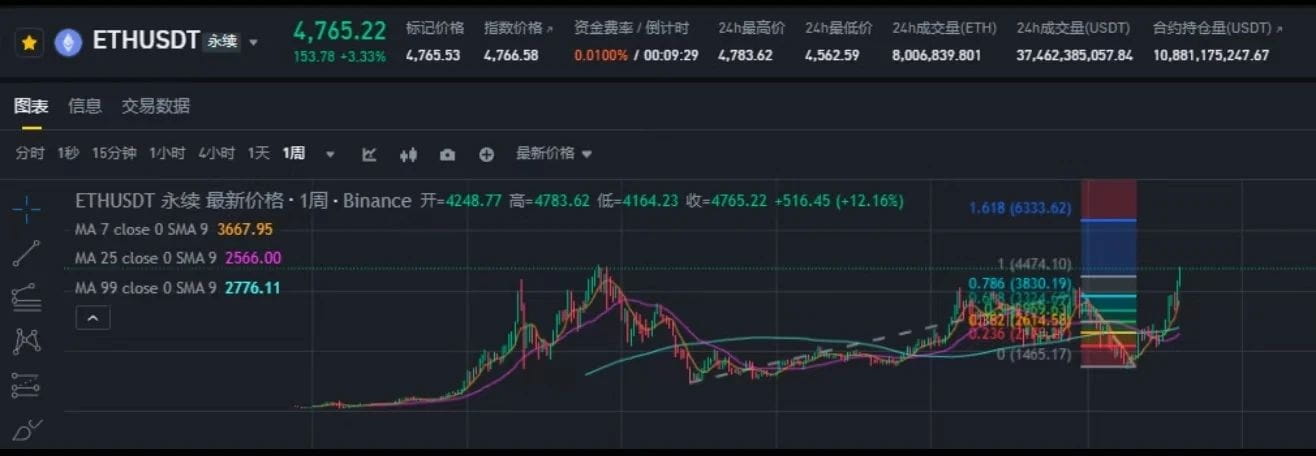
Key points: ETH bullish structure is solid, targeting $6,000.
Altcoin rotation accelerates
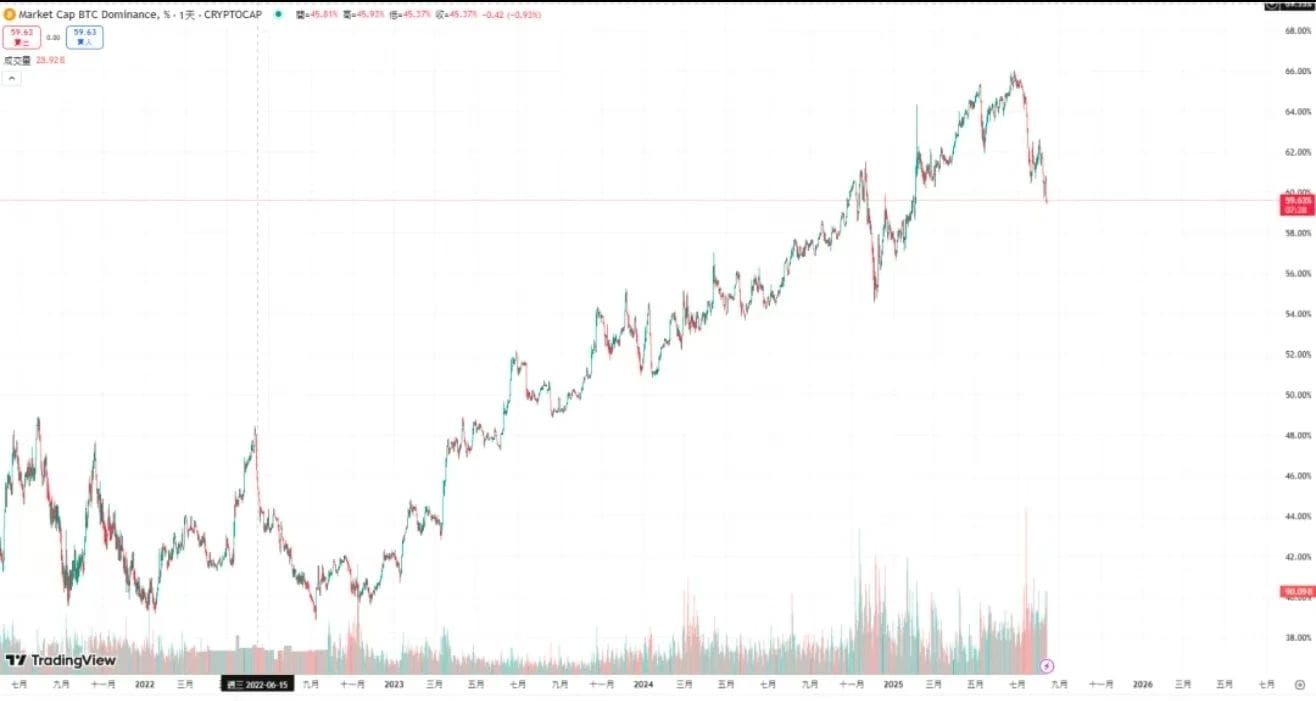
The upward effects of BTC and ETH spill over to altcoins. In the past week, BTC's market share fell by 3.98% to 59.32%; TOTAL 2 rose by 16.18%, and TOTAL 3 rose by 10.52%. SOL, XRP, LINK, and others benefit from the trend of asset tokenization; after Grayscale included BONK, DOGE, PEPE, and other meme coins saw daily increases exceeding 10%, with ZORA surging 27.35% to a new high, signaling the full activation of the 'altcoin season.' Key points: Significant capital rotation, with the altcoin sector fully active.
New patterns of capital flow
BTC breaking through $123,600 is not only a price record but also marks substantial progress in the integration of traditional finance with the crypto ecosystem. The allocation by institutions such as pensions, endowment funds, and public companies, along with ETH's role in asset tokenization infrastructure, is reshaping global capital flows. Although there are short-term risks of leverage and pullback pressure, the three driving forces of the rate cut cycle, regulatory optimization, and institutional accumulation will push the total crypto market capitalization towards $5 trillion. Key points: Crypto assets are becoming a core allocation category in the global capital landscape.